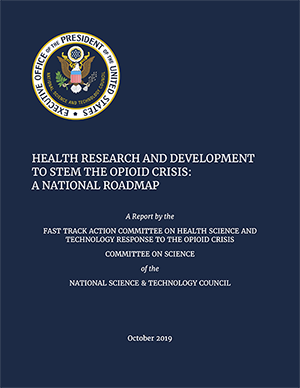STAT: Misguided federal regulations are likely to cause more pain in people already living with it12/2/2020
 Hidden in the shadows of the Covid-19 pandemic is the U.S.’s drug epidemic, which is getting worse. One group that is paying the price for it, but shouldn’t be, are people who live with chronic pain conditions. The opioid epidemic was initially fueled by the misuse of prescription opioids that were often obtained illegally. In recent years, though, the majority of overdose deaths have been caused by illegal or “street” drugs such as illicit fentanyl and its analogs, heroin, cocaine, and methamphetamines. About a decade ago, in an effort to address the increase in opioid-related overdose deaths, government agencies at both the state and federal levels clamped down on prescription opioids in a misguided effort to tackle the crisis. The result? Numerous pain patients who were legitimate users of opioids were forced to stop taking these effective painkillers and left to fend for themselves. As a result, some of them turned to the black market, leading to far more overdose deaths. Continue reading on STAT. Dr. Singh authored an original article in the Public Health Reports Journal on the emerging role of toxic adulterants in street drugs in the U.S. illicit opioid crisis.
Drug overdose deaths in the United States are a substantial public health issue. The number of annual reported drug overdose deaths increased roughly 3-fold, from 23 500 in 2002 to 70 200 in 2017. Of even greater concern, during this same period, the number of opioid-related overdose deaths increased 4-fold, from 11 900 in 2002 to 47 600 in 2017. From 2016 to 2017, rates of opioid-related overdose deaths rose from 42 400 to 47 600, an increase of 12%. Also during this period, death rates associated with cocaine and psychostimulants increased by 34.4% (from 3.2 to 4.3 per 100 000 population) and 33.3% (from 2.4 to 3.2 per 100 000 population), respectively, likely contributing to the rise in overall drug overdose deaths. On the other hand, the number of overdose deaths related to either prescription opioids (which include buprenorphine, codeine, hydrocodone, hydromorphone, meperidine, methadone, morphine, oxycodone, oxymorphone, and tramadol) or heroin did not increase. Estimates based on provisional data for 2018 from the Centers for Disease Control and Prevention (CDC) explain these findings. Of an estimated 48 000 overall opioid-related overdose deaths in 2018, 28 400 deaths involved nonmethadone synthetic opioids, the most common of which was illicitly manufactured fentanyl. This trend is concerning because illicitly manufactured drugs commonly contain additional pharmacologically active components. These components are added during the illicit manufacturing process to either increase the bulk of the product or enhance the potency of the primary active component, are known as adulterants or cutting agents, and can themselves be toxic. In this Executive Perspective, we review data on the opioid crisis and describe recent US and global trends in the role of toxic adulterants and other pharmacologically active components in illicitly manufactured street drugs. We also highlight the role of toxic adulterants in opioid-related overdose deaths, chronic illicit drug abuse, and other public health issues. Finally, based on the information provided, we propose that clinicians increase attention to the potential role of toxic adulterants when evaluating and treating patients involved in drug abuse, overdose death, and addiction and that future public and personal health responses to the opioid epidemic emphasize building awareness and knowledge about the presence and dangers of toxic adulterants. In this way, we can further highlight the need to aggressively decrease the supply of illicitly manufactured drugs. Continue reading on Sage Journals.  Dr. Singh joint published a White House Opioid Roadmap with the Office of Science and Technology Policy on October 29, 2019. Download Health Research and Development to Stem the Opioid Crisis: A National Roadmap.  Dr. Singh keynotes at the TSA 2019 Annual Meeting to present "The Response to the Opioid Crisis: How Physician Anesthesiologists and the Government are Helping Shape the Future of Pain Management and Anesthesiology for Our Patients" on September 5, 2019. Learn more about the Texas Society of Anesthesiologists.  Dr. Singh chaired the Pain Management Best Practices Inter-Agency Task Force and published the final Report to Congress on May 30, 2019. The Pain Management Best Practices Inter-Agency Task Force, a federal advisory committee established by the Comprehensive Addiction and Recovery Act of 2016 - PDF, today released its final report on acute and chronic pain management best practices, calling for a balanced, individualized, patient-centered approach. To ensure best practices for the treatment of pain, the Task Force final report underscores the need to address stigma, risk assessment, access to care and education. It also highlights five broad categories for pain treatment: medications, interventional procedures, restorative therapies, behavioral health, and complementary and integrative health approaches. Continue reading on HHS.gov. Download the Report on Pain Management Best Practices: Updates, Gaps, Inconsistencies, and Recommendations. |
Archives
May 2023
Categories |
 RSS Feed
RSS Feed




